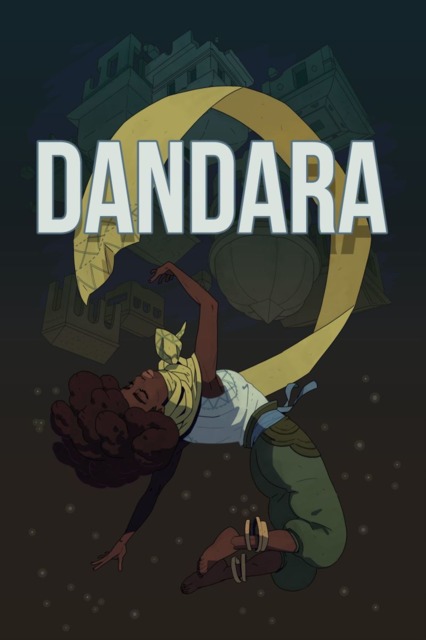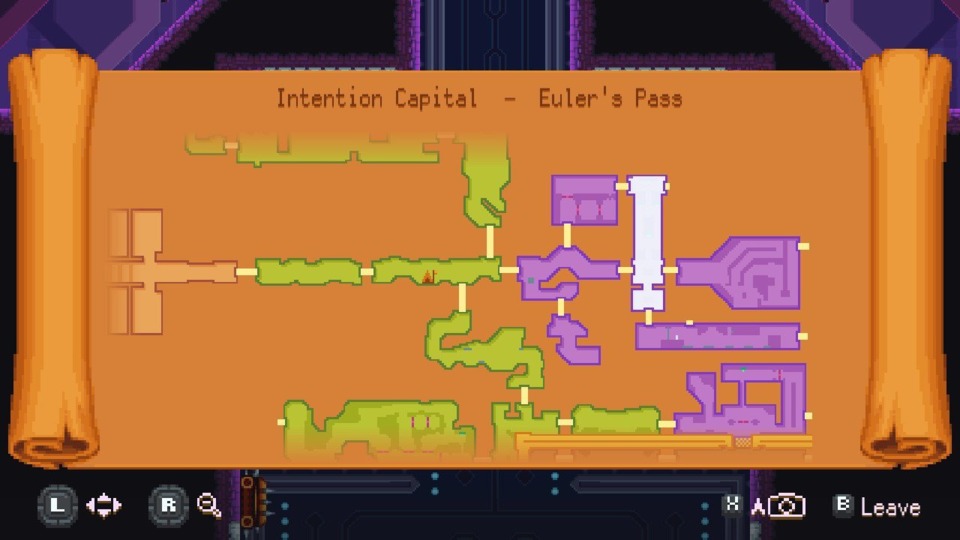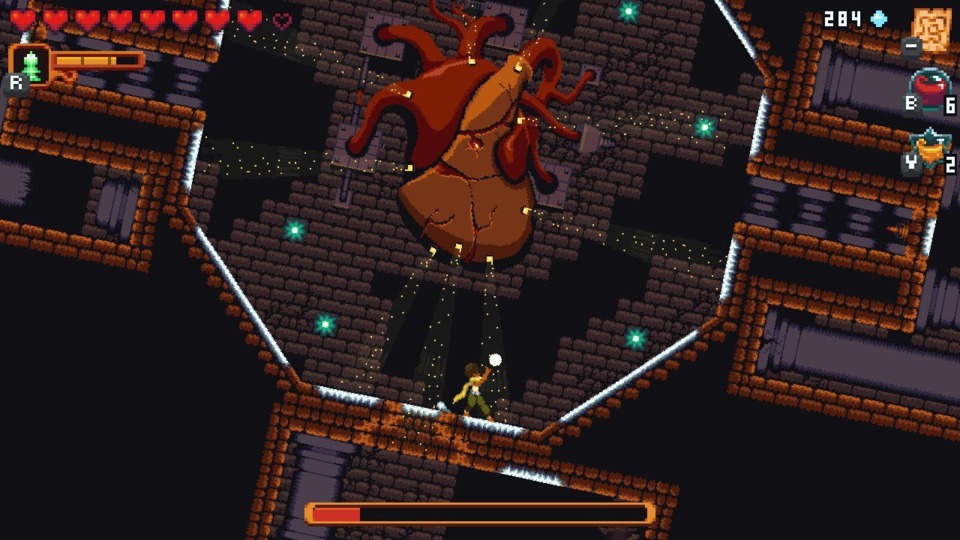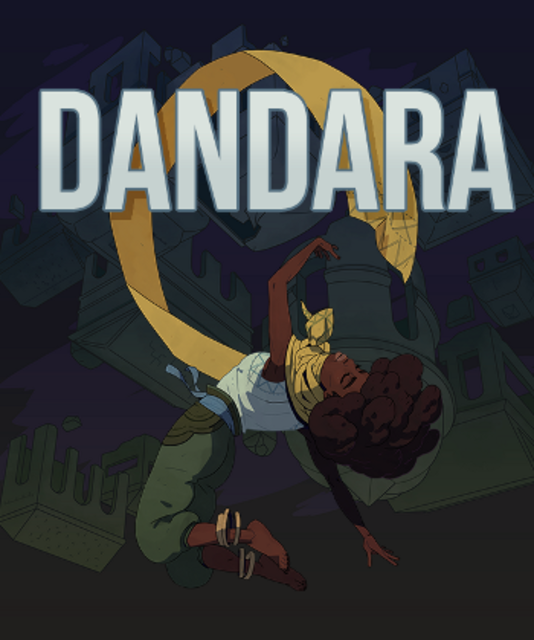
Guess who's playing Indie spacewhippers again? This guy. Can't get enough of 'em. Dandara's another one that - perhaps recognizing the ubiquity of its chosen format - has opted for a divergent control scheme, not unlike similar contemporary Yoku's Island Express. Instead of pinball, however, Dandara has a distinctive movement scheme where the player can only jump from point to point, and only to surfaces within range (though gravity is not a concern). Accessible locations are always covered in a layer of salt - humble old sodium chloride plays a significant role in the game's bizarre story also - and so the player can quickly hop between opposing surfaces with a targeting reticle that also allows them to aim and charge their arrow-like weapon. A typical battle might involve firing at a target, quickly switching surfaces to lose any projectiles or charge attacks heading your way, and using the moment of downtime to re-target and take another shot.
Dandara also has the format-typical 2D pixel approach to its world design, but to its credit the artwork is frequently gorgeous and animated well. It has no shortage of spectacle either, set in a metaphysical world of creation where various deities squabble over the rights to direct reality in their preferred style. The player character, Dandara, is a concept brought to life: a savior for a world on the turn, silently committing to her duty. It reminded me a little of Axiom Verge, and how the two games gave the impression that it intended to press on with its strange narrative whether I understood what was happening or not. Elsewise, the game is relatively brusque with its story and instead follows the usual pattern of having the player locate special items that confer new abilities, tutorializing those abilities with a few simple iterations of their attached puzzles, and then letting the player go explore the various new avenues that had just opened up. These abilities frequently complement the game's unusual movement style, including techniques like flipping certain platforms, bracers that create temporary shields, and one interesting skull-shaped emblem that activated a bunch of platforms and traps, for better and worse.

Unfortunately, Dandara is also very short. You don't feel it too much in the game, which will probably take anywhere between a healthy five-to-eight hours, but the abruptness with how quickly the final dungeon (and the final boss) arrives is enough to make you wonder if you missed an entire region elsewhere. The designers had the sense to tap out once they ran out of ideas - always best to do that before, rather than after - but it does leave the player wanting more. Not always a bad thing for a game to do, I suppose. Dandara also has an unusual difficulty curve where the game gets gradually easier to handle, made more unusual by how this is due to the game's handful of Soulsian hooks (there's no escaping that franchise even in 2D spacewhippers, as I discovered with the likes of Salt and Sanctuary, Hollow Knight, and Momodora: Reverie Under the Moonlight). Dandara has a limited amount of health, but levelling up with collected salt - which you can lose in corpse runs, so it's best to play it safe when you're working your way back to the site of your last demise - will increase this health total from three HP to twenty. Likewise, you can find healing items and boost their efficiency, so players able to hang onto their gains long enough to spend them should find themselves with a surfeit of health that lets them tank almost every encounter in the game, rather than depending on the loop of dexterously avoiding and retaliating with the game's very deliberate approach to combat. The only deaths I suffered towards the end of the game were borne of carelessness: if you don't carve out a large enough break in the action to quaff a healing item, you can find yourself stun-locked and killed in quick succession. On the whole, I found that the game was becoming less difficult the longer I played it, though maybe that speaks more to how thorough my explorations were (additional healing items help a lot) and how risk-averse I could be - often taking the time to backtrack to the nearest camp to spend any large accumulation of building points; a process made easier by how enemies don't respawn until you rest (in true Souls style).

Dandara is a fascinating game though, between its fluid jumping-exclusive movement and its heady ruminations on the nature of creativity and inspiration. The wild, forested sections of this world are given over to raw imagination, while the futuristic and mechanical city areas spoke more about the "intention" and "rules" that turn imagination into expertly crafted artwork and technological advancement. It feels like someone took a PowerPoint presentation on the creative process for professional artists and built a world out of every slide, and I can always appreciate when a spacewhipper gets weird with its premise: lord knows we need something to set them all apart. It's why I also appreciated the lunacy of Iconoclasts, the appeal of which was enhanced in no small part by building a dark, elaborate tale of divinity and purpose in conjunction with its half-decent exploration and combat. There's a lot to appreciate about Dandara, ultimately, and though I have a few misgivings about its brief length and reverse difficulty curve I have no significant objections to it. Check it out if you're looking for a spacewhipper that offers an experience out of the ordinary.
Rating: 4 out of 5.
| < Back to 120: The Tiny Bang Story | The First 100 | > Forward to 122: The Mooseman |

Log in to comment